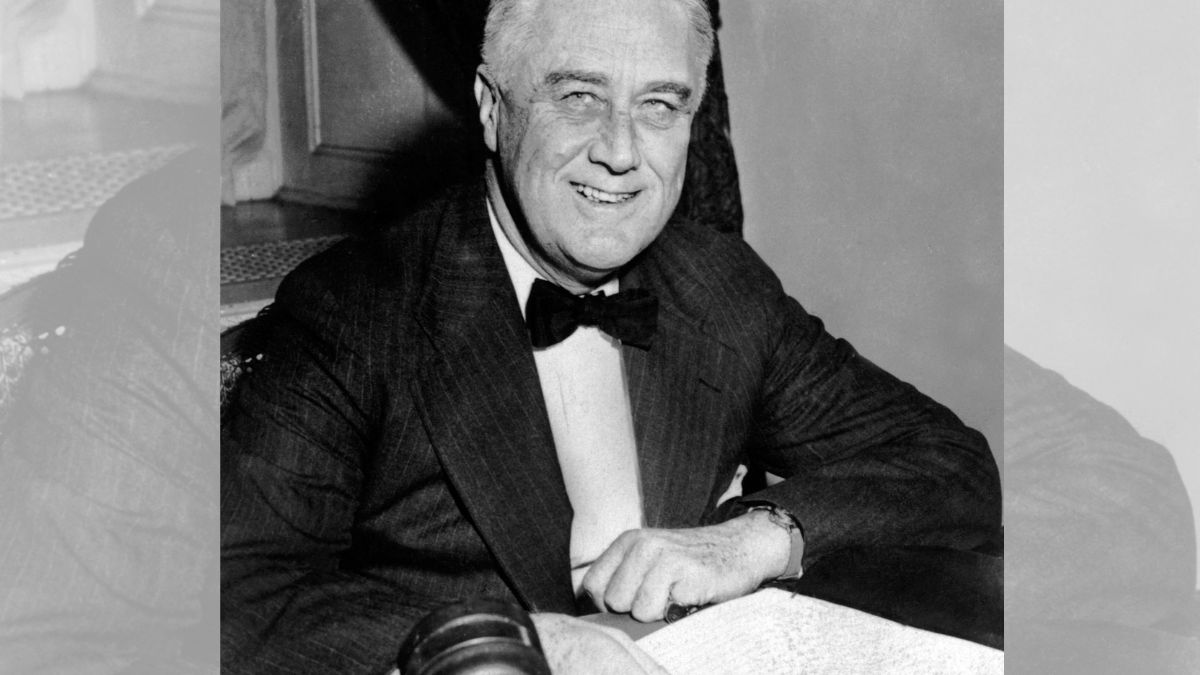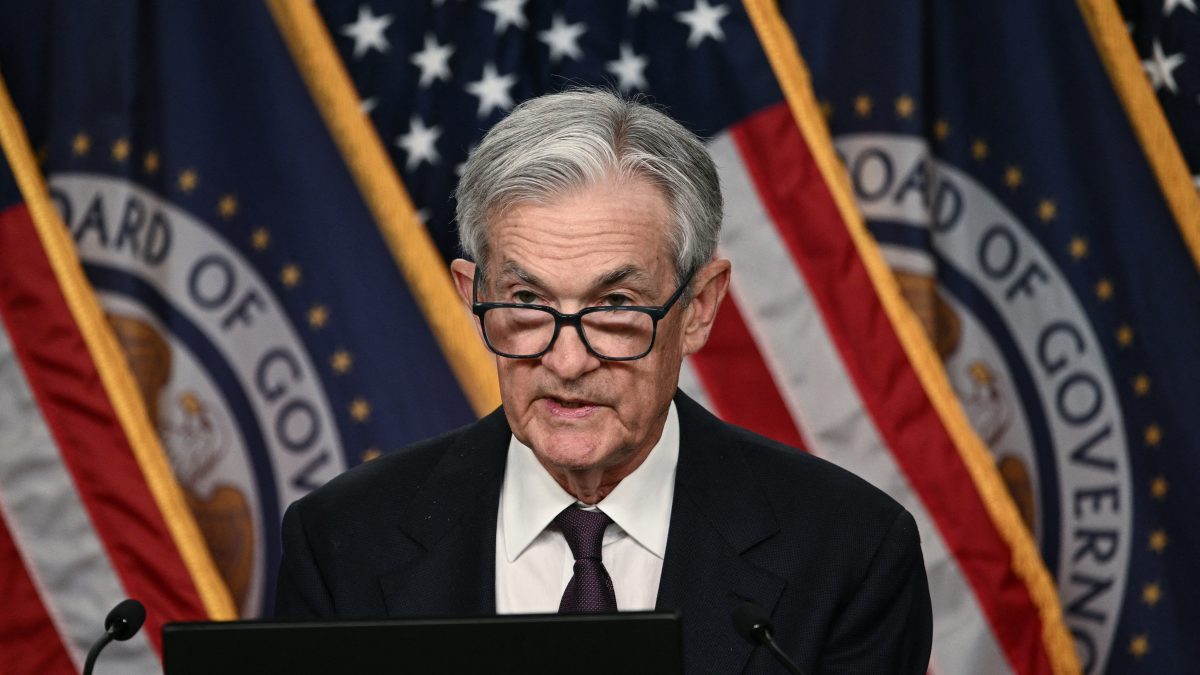Editor’s Note: This profile is part of a _series_ taking a closer look at US presidents ahead of the 2024 presidential election between Donald Trump and Kamala Harris.
Franklin D Roosevelt, the 32nd President of the United States, served an unprecedented four terms and became one of the most transformative figures in American history.
His presidency was marked by his response to the Great Depression with the New Deal, a series of sweeping reforms that reshaped the US government’s role in the economy.
He also led the nation through the vast majority of World War II, laying the groundwork for a postwar world. Known for his optimism and pragmatic leadership, Roosevelt remains one of the most celebrated US presidents , recognised for his ability to navigate the country through two of its greatest crises.
FDR’s early life
Franklin Delano Roosevelt was born on January 30, 1882, in Hyde Park, New York, into a wealthy and prominent family. He was a distant cousin of Theodore Roosevelt, the 26th US president, whose progressive policies would later influence FDR’s political philosophy.
Raised in privilege, Roosevelt attended elite schools, including Groton and Harvard University, where he cultivated his interest in public service.
In 1905, Roosevelt married Eleanor Roosevelt, his fifth cousin once removed. Eleanor would become a significant political figure in her own right, advocating for civil rights, women’s rights, and social justice throughout her life and during her time as First Lady of the United States.
Roosevelt entered politics in 1910 when he won a seat in the New York State Senate as a Democrat. In 1913, US President Woodrow Wilson appointed him Assistant Secretary of the Navy, a position he held throughout World War I. This role gave Roosevelt valuable administrative experience and reinforced his belief in a strong US Navy, a view that would become crucial during World War II.
In 1920, Roosevelt ran as the Democratic vice-presidential candidate, but lost to Republicans, Warren G Harding and Calvin Coolidge.
A year later, Roosevelt was struck by polio, which left him paralysed from the waist down. Despite his physical limitations, Roosevelt remained politically active and worked to regain his strength. His ability to persevere through personal adversity became a defining aspect of his public image.
FDR’s rise to the White House
In 1928, Roosevelt was elected governor of New York, where he implemented progressive policies aimed at improving labour conditions and providing relief for the poor. His success in New York, coupled with the economic collapse following the 1929 stock market crash, set the stage for his presidential run in 1932.
Running on a platform of hope and reform during the Great Depression, Roosevelt defeated incumbent US President Herbert Hoover in a landslide. He famously promised the American people a “New Deal,” which would aim to revive the economy and provide direct relief to those suffering from unemployment and poverty.
The “New Deal”
Roosevelt’s first term began with an aggressive response to the Great Depression, as he launched the New Deal, a series of federal programmes, public work projects, financial reforms, and regulations. His administration aimed to provide relief to the unemployed, recover the economy, and reform the financial system to prevent future depressions.
Among the most notable New Deal programmes were the Civilian Conservation Corps (CCC), which provided jobs in environmental conservation; the Social Security Act, which established a social safety net for the elderly and unemployed; and the Works Progress Administration (WPA), which employed millions of Americans in public works projects.
His administration also introduced reforms to stabilise the banking sector, including the establishment of the Federal Deposit Insurance Corporation (FDIC).
Roosevelt’s leadership style was defined by his willingness to experiment with different policies and his ability to communicate with the American public.
His series of radio addresses, known as “Fireside Chats,” helped to reassure a nervous nation and restore confidence in government leadership during the economic crisis.
ALSO READ: Presidents of the United States: John F Kennedy, the charismatic Cold War hero
A second term and the growth of opposition
Roosevelt’s second term was dominated by efforts to expand and solidify the New Deal. While the economy improved, his policies faced increasing opposition, particularly from conservative critics and the Supreme Court, which ruled several New Deal measures unconstitutional.
In response, Roosevelt proposed the “court-packing” plan in 1937, which sought to add more justices to the Supreme Court who would support his agenda. The plan was highly controversial and ultimately failed, but the Court became more favourable to his policies afterwards.
Despite the challenges, Roosevelt’s second term saw continued progress in social and economic reforms, including the creation of additional programmes to aid farmers, workers, and the elderly.
However, a severe recession in 1937–1938 slowed the economic recovery and led to criticism of his policies.
World War II & The “Arsenal of Democracy”
As Europe descended into war in the late 1930s, Roosevelt initially focused on keeping the United States neutral, reflecting the strong isolationist sentiment in the country.
However, he recognised the growing threat posed by Nazi Germany and Imperial Japan. In 1940, Roosevelt made history by running for and winning an unprecedented third term, largely due to concerns about global instability and his steady leadership.
After the Japanese attack on Pearl Harbor on December 7, 1941, Roosevelt delivered his famous “Day of Infamy” speech and led the US into World War II. His administration quickly mobilised the nation for war, transforming the economy into what he called the “Arsenal of Democracy” by ramping up industrial production to supply the Allies.
Roosevelt worked closely with British Prime Minister Winston Churchill and Soviet Premier Joseph Stalin to coordinate military strategy and plan for the postwar world. His leadership helped secure key Allied victories, including the invasions of North Africa, Italy, and, most notably, the D-Day invasion of Normandy in 1944, which marked the beginning of the end for Nazi Germany.
Fourth term and Death
In 1944, Roosevelt was elected to a fourth term, though his health was rapidly declining. He continued to focus on the war effort and preparations for peace, including laying the groundwork for the creation of the United Nations, an international organisation aimed at fostering global cooperation.
On April 12, 1945, just months before the end of World War II, Franklin D Roosevelt died of a cerebral haemorrhage at his retreat in Warm Springs, Georgia. His death shocked the nation and the world, but his legacy as a wartime leader and reformer was already firmly established.
FDR’s life & legacy
Franklin D Roosevelt’s wife, Eleanor Roosevelt, played a significant role both during and after his presidency. As US First Lady, she became a champion for civil rights, women’s rights, and humanitarian causes, influencing FDR’s policies and maintaining an independent political presence.
After his death, Eleanor continued her advocacy and served as a US delegate to the United Nations. The Roosevelts had six children, though only five survived to adulthood. Many of their children went on to have careers in public service, furthering the family’s legacy in American politics.
Franklin D Roosevelt’s presidency is regarded as one of the most consequential in US history. He fundamentally reshaped the role of the federal government in American life through the New Deal, expanding its responsibility for economic stability and social welfare.
His leadership during World War II not only helped secure victory for the Allies but also positioned the US as a global superpower in the postwar era.
FDR’s ability to inspire and rally the nation during its darkest times — first during the Great Depression and then through World War II — cemented his place as a transformative and revered leader. His commitment to social justice, economic reform, and global cooperation continues to influence American politics and policy to this day.
With inputs from agencies


)

)
)
)
)
)
)
)
)



